This article explains how to install Mautic with Nginx on Ubuntu 24.04.
Mautic is an open-source marketing automation platform that lets you manage your marketing campaigns. It provides tools for email marketing, social media integration, landing page creation, and more, empowering users to engage with their audience effectively.
Nginx is known for its high performance and ability to handle many simultaneous connections.
Installing Mautic with Nginx on Ubuntu lets you leverage these advantages to create a robust and efficient marketing automation platform tailored to your needs.
Install Nginx HTTP server on Ubuntu
Mautic requires a web server. This post will install and use the Nginx web server to run Mautic.
To do that, open the Ubuntu terminal and run the commands below to install the Nginx web server.
sudo apt update
sudo apt install nginx
Once Nginx is installed, the commands below can start, stop, and enable the Nginx web server to start automatically when your server boots up.
sudo systemctl stop nginx
sudo systemctl start nginx
sudo systemctl enable nginx
You can test the Nginx web server by opening your web browser and browsing to the server’s localhost or IP address.
http://localhost
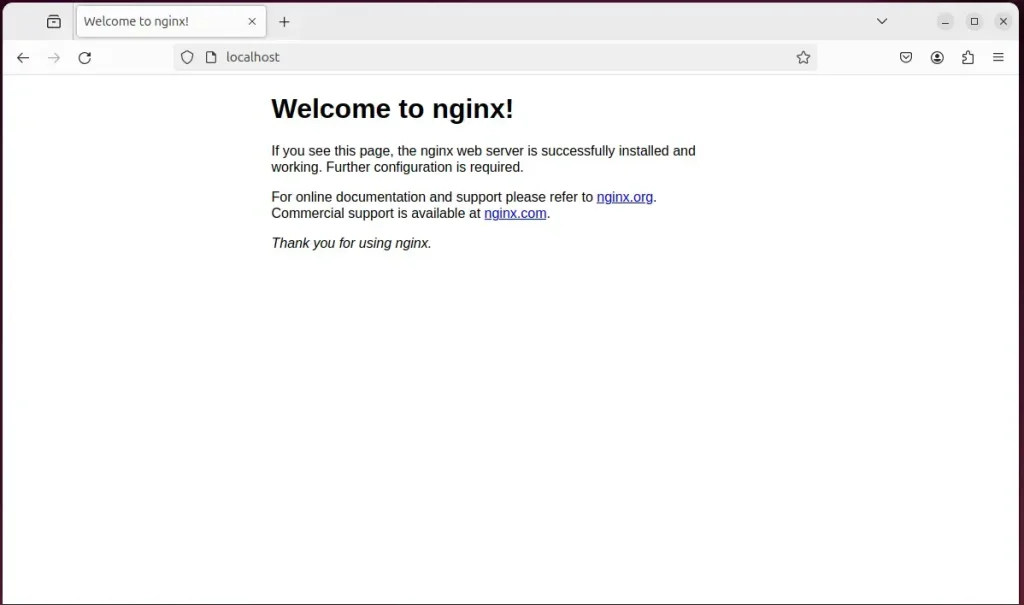
When you see the Welcome to nginx!, it means the Nginx HTTP server is successfully installed.
Additional help on installing Nginx on Ubuntu is in the link below.
How to install Nginx on Ubuntu
Install the MariaDB database server on Ubuntu
The next component required to run Mautic is a database server. This post will install and use the MariaDB database server.
To install and use the MariaDB database server, use the instructions below.
Open the Ubuntu terminal and run the commands below to install the MariaDB database server.
sudo apt update sudo apt install mariadb-server
Once the MariaDB database server is installed, use the commands below to stop, start, and enable the MariaDB server to start automatically when the server boots.
sudo systemctl stop mariadb sudo systemctl start mariadb sudo systemctl enable mariadb
Run the following commands to validate and test if the MariaDB database server is installed successfully.
sudo mariadb
Once you run the commands above, it will log you onto the MariaDB console and display a message similar to the one below.
Welcome to the MariaDB monitor. Commands end with ; or g. Your MariaDB connection id is 32 Server version: 10.11.2-MariaDB-1 Ubuntu 23.04 Copyright (c) 2000, 2018, Oracle, MariaDB Corporation Ab and others. Type 'help;' or 'h' for help. Type 'c' to clear the current input statement. MariaDB [(none)]>
The message tells you that the server is installed successfully.
Additional help on installing MariaDB.
Create a Mautic database
Upon successfully installing the MariaDB database server, create a blank database on the server specifically for the Mautic application.
As part of the setup, we will create a mauticdb database and a user account called mauticdbuser.
Finally, we’ll grant the mauticdbuser full access to the mauticdb database.
All the database steps above can be done using the commands below:
But first, log on to the MariaDB database server:
sudo mariadb
Then run the commands below to complete the steps:
CREATE DATABASE mauticdb CHARACTER SET utf8mb4 COLLATE utf8mb4_general_ci;
CREATE USER mauticdbuser@localhost IDENTIFIED BY 'type_your_password_here';
GRANT ALL ON mauticdb.* TO mauticdbuser@localhost WITH GRANT OPTION;
FLUSH PRIVILEGES;
exit
Ensure to replace ‘type_your_password_here ‘with your password.
Install PHP on Ubuntu Linux
The last component you will need to run Mautic is PHP. The Mautic application is PHP-based and supports the latest versions of PHP.
Then, run the commands below to install the latest PHP version.
sudo apt install php-fpm php-intl php-mysql php-curl php-cli php-zip php-xml php-gd php-common php-mbstring php-xmlrpc php-bcmath php-json php-sqlite3 php-soap php-zip php-ldap php-imap php-redis
Additional help on installing PHP
How to install PHP on Ubuntu Linux
Download Mautic files
Let’s begin downloading and configuring the Mautic files on Ubuntu Linux.
First, install Composer, git, and curl packages by running the command below.
sudo apt install git curl
sudo curl -sS https://getcomposer.org/installer | sudo php -- --install-dir=/usr/bin --filename=composer
Then, run the commands below to install Composer and use it to download Mautic content.
cd /var/www/
sudo git clone https://github.com/mautic/mautic.git
sudo chown -R www-data:www-data /var/www/mautic/
cd mautic
sudo -u www-data composer install
If the steps above fail because npm is missing, run the command below to install it, then rerun the Composer install command.
sudo apt-get install npm
sudo mkdir /var/www/.npm
sudo chown -R 33:33 /var/www/.npm
Once you have completed all the above steps, continue configuring the Nginx web server below to serve the Mautic content.
Run the commands below to create a Nginx virtual host file for Mautic.
sudo nano /etc/nginx/sites-available/mautic.conf
Then, copy and paste the content block below into the Nginx server block.
server {
listen 80;
listen [::]:80;
root /var/www/mautic;
index index.php;
server_name mautic.example.com;
access_log /var/log/nginx/example.com.access.log;
error_log /var/log/nginx/example.com.error.log;
location / {
try_files $uri $uri/ /index.php?$args;
}
location ~ .php$ {
include snippets/fastcgi-php.conf;
fastcgi_pass unix:/var/run/php/php8.3-fpm.sock;
fastcgi_param SCRIPT_FILENAME $document_root$fastcgi_script_name;
include fastcgi_params;
}
}
Save the file.
Then, run the commands below to enable the virtual host and restart the Nginx server.
sudo ln -s /etc/nginx/sites-available/mautic.conf /etc/nginx/sites-enabled/
sudo systemctl restart nginx.service
Setup Let’s Encrypt SSL/TLS for Mautic
You may want to install an SSL/TLS certificate to secure your Mautic site. Secure your Mautic installation with HTTPS from Let’s Encrypt.
Please read the post below for additional resources on installing and creating Let’s Encrypt SSL certificates for Nginx.
How to set up Let’s Encrypt SSL certificate for Nginx on Ubuntu Linux
Once you have restarted the Nginx web server, open your browser and browse to the server hostname or IP address defined in the Nginx server block.
http://mautic.example.com
The Mautic installation wizard should appear.
Click Next to begin the installation.
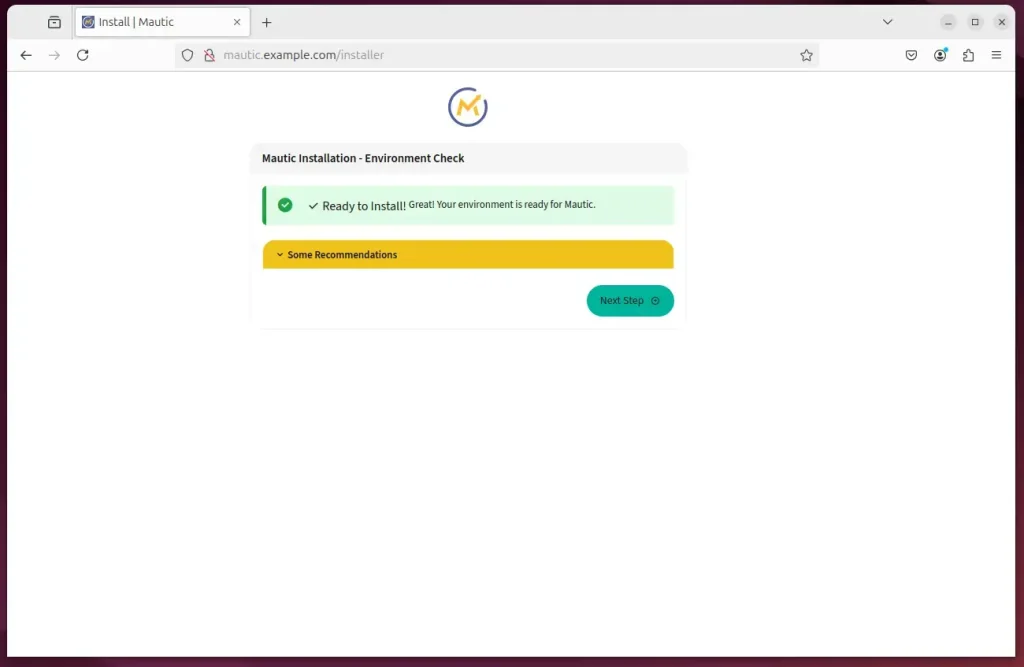
Type in the database name and password, then click Next.
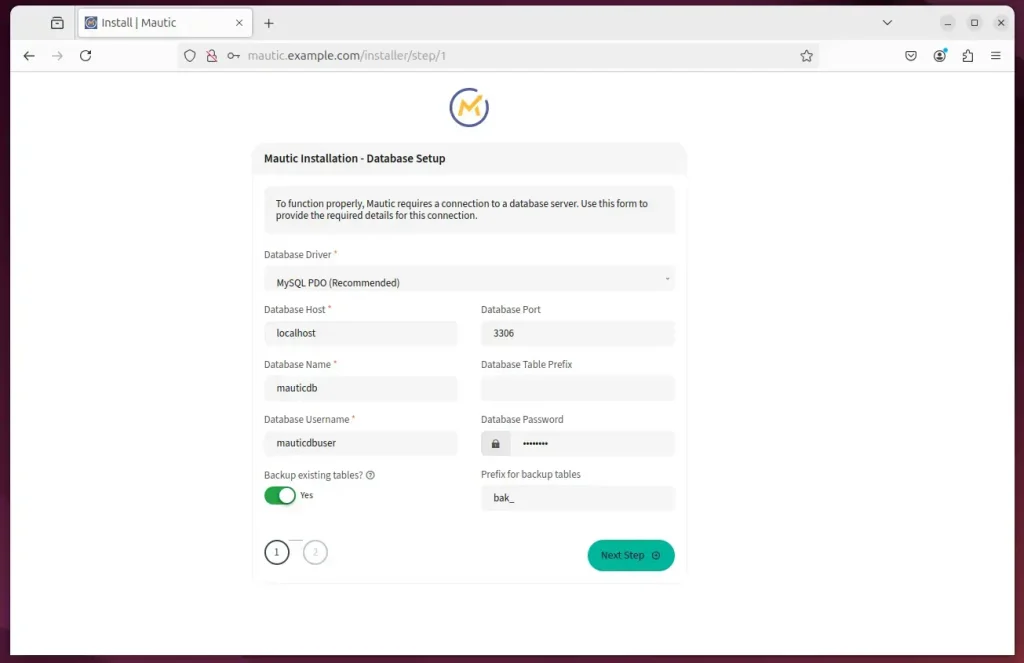
Create an admin account and continue.
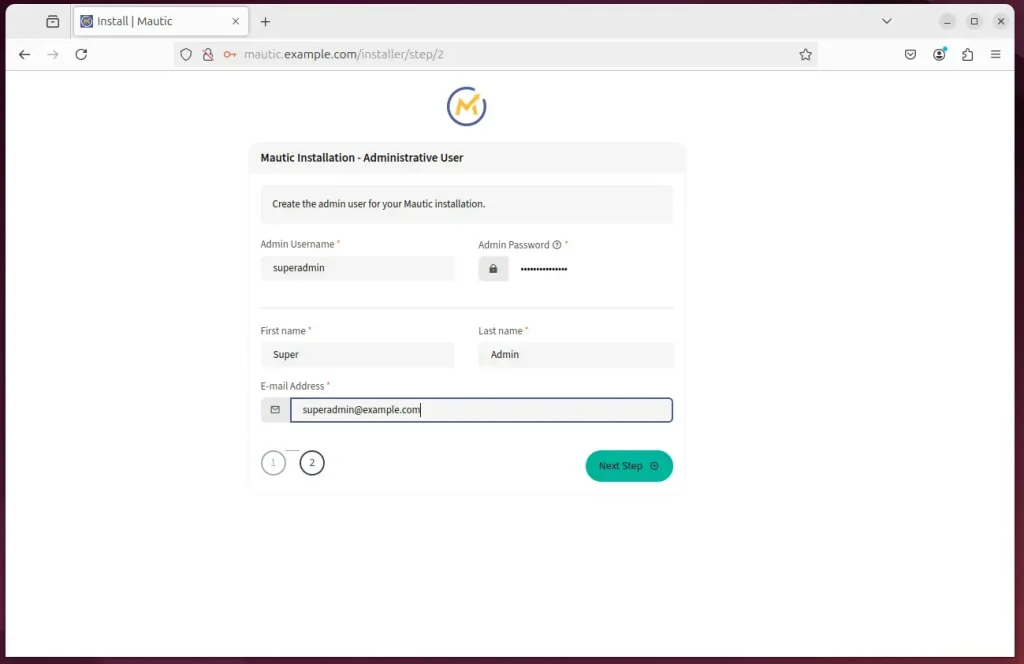
Mautic should be ready to use.
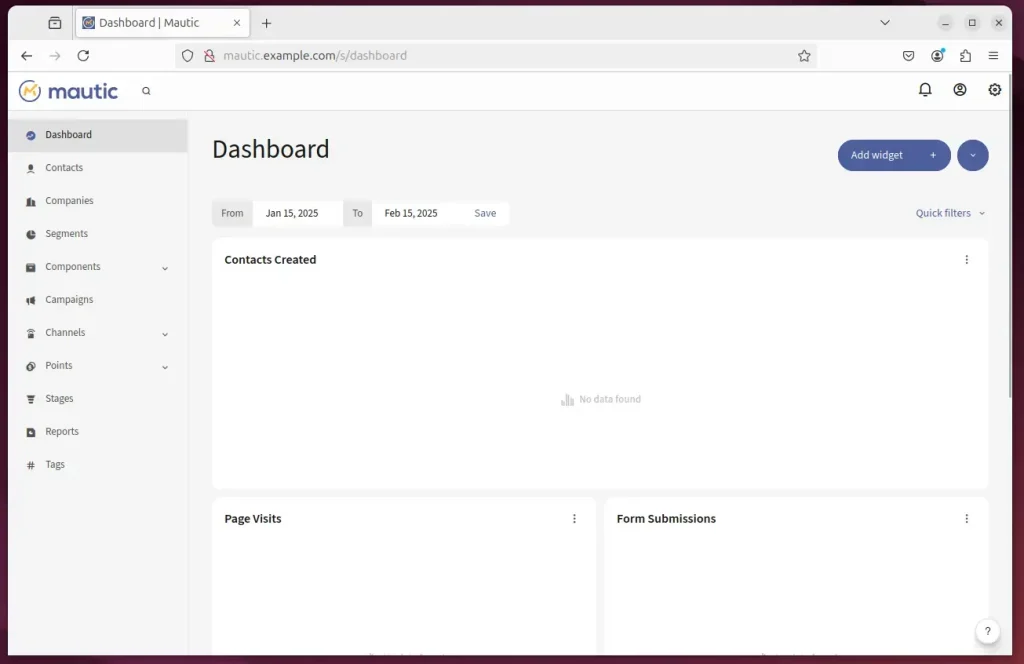
That should do it!
Conclusion:
- Mautic Installation: Successfully installed Mautic on Ubuntu using the Nginx server, enabling robust marketing automation capabilities.
- Components Covered: Configured necessary components, including Nginx, MariaDB, and PHP, for seamless operation of Mautic.
- Database Created: Established a dedicated database and user for Mautic, ensuring secure data management.
- SSL Configuration: Enhanced security by considering the installation of SSL/TLS certificates through Let’s Encrypt for encrypted data transfer.
- User-Friendly Setup: The installation wizard guides users through the final steps, ensuring the setup process is straightforward and efficient.
- Next Steps: Explore Mautic features to maximize marketing automation strategies and engagement with audiences effectively.

Leave a Reply